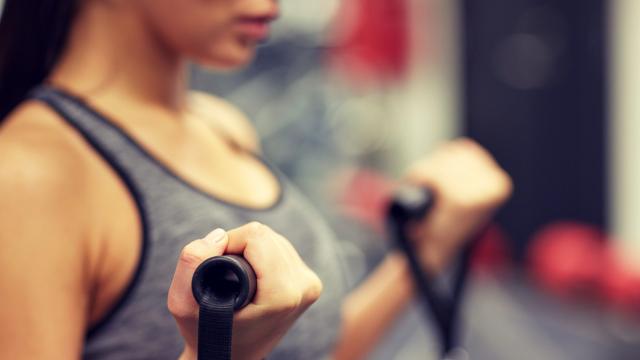Most people tend to be in a love-hate relationship with muscle soreness. It sucks when you can barely sit down on the toilet, but it feels awesome knowing that you worked out hard. That’s fine and all, but just because you’re sore may not be the best indicator for muscle growth. Here’s what we mean.
Image by tktodd.
The dreaded DOMS (or delayed onset muscle soreness) is that wicked stiffness and localised pain you feel a few days after a fairly new workout. (For the record, we’re talking about the soreness incurred from lifting weights.) When it comes, it hits hard like Superman on speed, but most people relish in it thinking that serious muscle growth and progress have been made.
Not necessarily so, according to Body Recomposition:
Four things to think about:
1. DOMS is usually the worst at the beginning of the training cycle, especially with new movements but visible and increased growth usually occurs at the end of the cycle when DOMS no longer happens.
2. Some muscles, the deltoids are one example, very rarely get sore for some reason, but they grow just fine. DOMS is not required.
3. People who train very infrequently such as a bodypart once/week often report amazing DOMS. But many of them don’t grow well.
4. People who train somewhat more frequently (i.e. 2-3 times/week per muscle group) always report LESS DOMS but MORE growth.
Basically, the above seems to indicate that not only is DOMS not associated with growth, but in most cases you get better growth with less
Additionally, a recent study, titled Leukocytes, cytokines and satellite cells: what role do they play in muscle damage and regeneration following eccentric exercise? and published by the University Hospital and Medical Faculty of Tübingen, discusses how the activation of satellite cells in muscles “does not seem to be directly related to muscle damage markers.” However, the researchers also note that initial muscle damage creates the stimulus needed for satellite cells to — in the most reductive terms — regenerate and build bigger muscle.
It’s helpful to note here that DOMS also isn’t the best indicator of muscle damage, anyway.
Remember that biology, however, is not so black and white. The above can look differently just based on whether you’re looking at short-term or long-term training adaptations.
So, what does this mean for you? Strength coach Greg Nuckols suggests that in the short run, avoiding too much muscle damage in order for you to train with higher frequency pays off; your muscles will grow just fine without constant, significant damage in the short-term.
For the most part, high degrees of muscle damage from time-to-time is indeed very helpful, but don’t spend every workout pushing ’til you’re limping out of the gym. That could compromise your ability to adequately do the following workouts, and not to mention, have a negative impact on your joints in the long-term.
DOMS and Muscle Growth [Body Recomposition]

Comments
One response to “When Muscle Soreness Helps Muscle Growth (And When It Doesn’t)”
I’m surprised no one’s come back with their bro-science… Then again, this is Lifehacker, not Muscle Weekly…